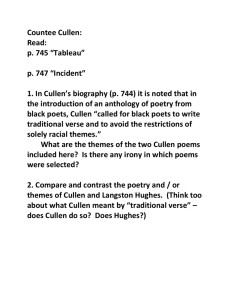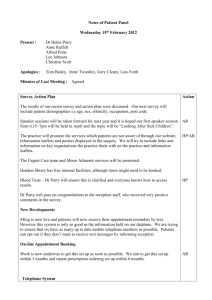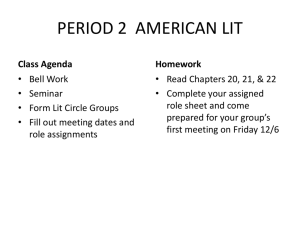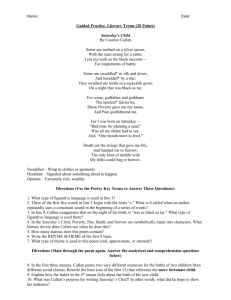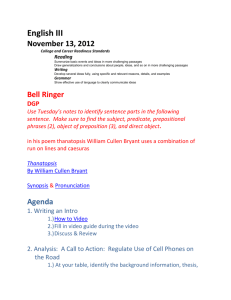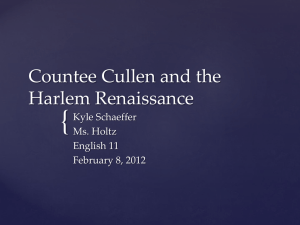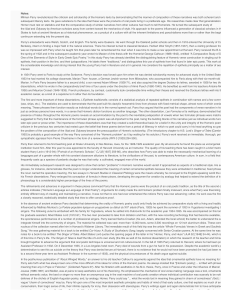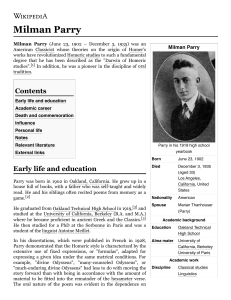STUDENT CULTURES: Patriarchy, Emulation and Agonism.
advertisement
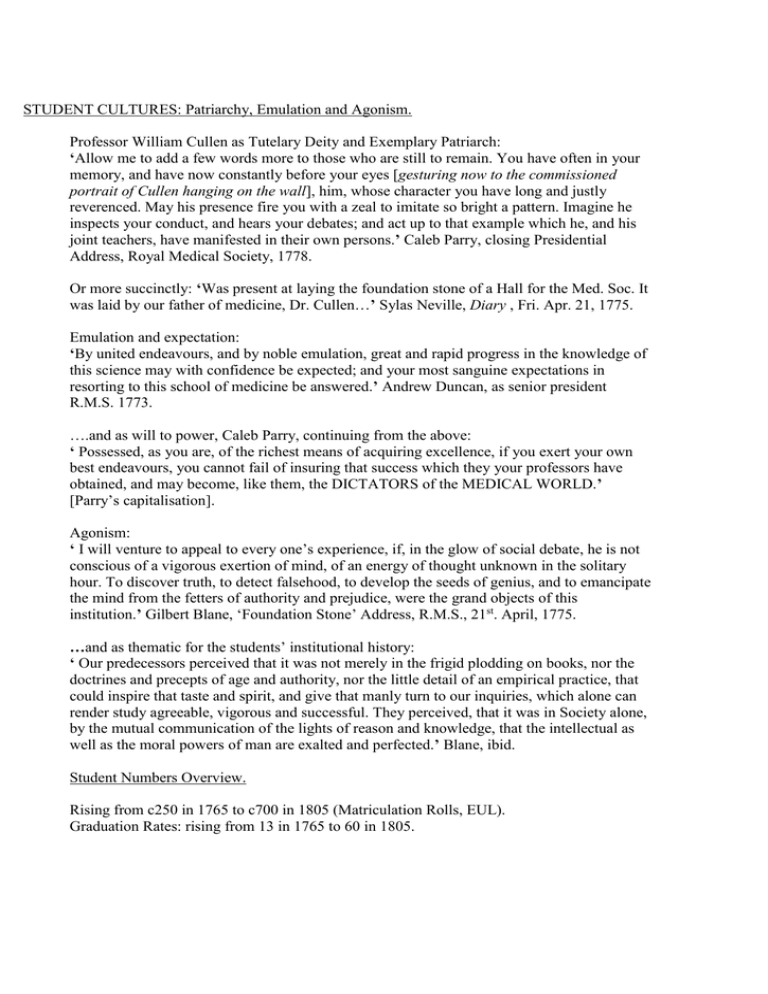
STUDENT CULTURES: Patriarchy, Emulation and Agonism. Professor William Cullen as Tutelary Deity and Exemplary Patriarch: ‘Allow me to add a few words more to those who are still to remain. You have often in your memory, and have now constantly before your eyes [gesturing now to the commissioned portrait of Cullen hanging on the wall], him, whose character you have long and justly reverenced. May his presence fire you with a zeal to imitate so bright a pattern. Imagine he inspects your conduct, and hears your debates; and act up to that example which he, and his joint teachers, have manifested in their own persons.’ Caleb Parry, closing Presidential Address, Royal Medical Society, 1778. Or more succinctly: ‘Was present at laying the foundation stone of a Hall for the Med. Soc. It was laid by our father of medicine, Dr. Cullen…’ Sylas Neville, Diary , Fri. Apr. 21, 1775. Emulation and expectation: ‘By united endeavours, and by noble emulation, great and rapid progress in the knowledge of this science may with confidence be expected; and your most sanguine expectations in resorting to this school of medicine be answered.’ Andrew Duncan, as senior president R.M.S. 1773. ….and as will to power, Caleb Parry, continuing from the above: ‘ Possessed, as you are, of the richest means of acquiring excellence, if you exert your own best endeavours, you cannot fail of insuring that success which they your professors have obtained, and may become, like them, the DICTATORS of the MEDICAL WORLD.’ [Parry’s capitalisation]. Agonism: ‘ I will venture to appeal to every one’s experience, if, in the glow of social debate, he is not conscious of a vigorous exertion of mind, of an energy of thought unknown in the solitary hour. To discover truth, to detect falsehood, to develop the seeds of genius, and to emancipate the mind from the fetters of authority and prejudice, were the grand objects of this institution.’ Gilbert Blane, ‘Foundation Stone’ Address, R.M.S., 21st. April, 1775. …and as thematic for the students’ institutional history: ‘ Our predecessors perceived that it was not merely in the frigid plodding on books, nor the doctrines and precepts of age and authority, nor the little detail of an empirical practice, that could inspire that taste and spirit, and give that manly turn to our inquiries, which alone can render study agreeable, vigorous and successful. They perceived, that it was in Society alone, by the mutual communication of the lights of reason and knowledge, that the intellectual as well as the moral powers of man are exalted and perfected.’ Blane, ibid. Student Numbers Overview. Rising from c250 in 1765 to c700 in 1805 (Matriculation Rolls, EUL). Graduation Rates: rising from 13 in 1765 to 60 in 1805.
